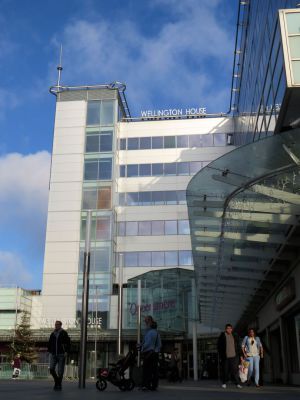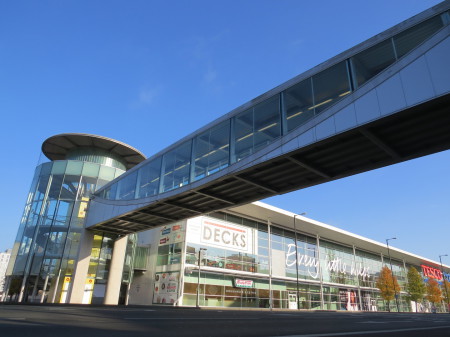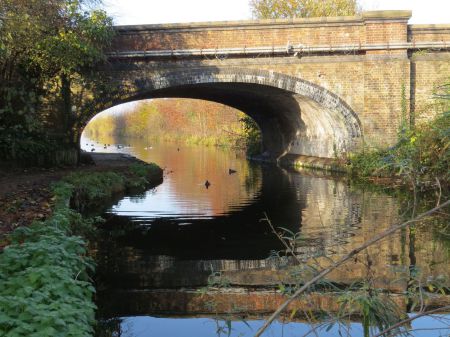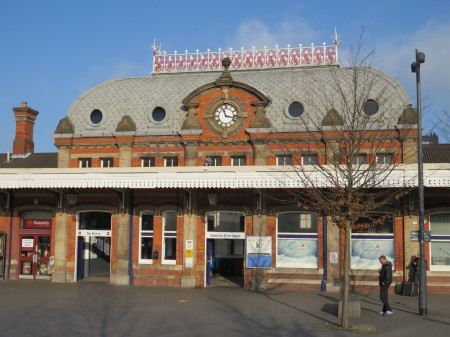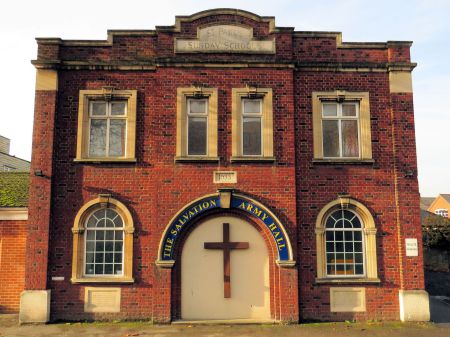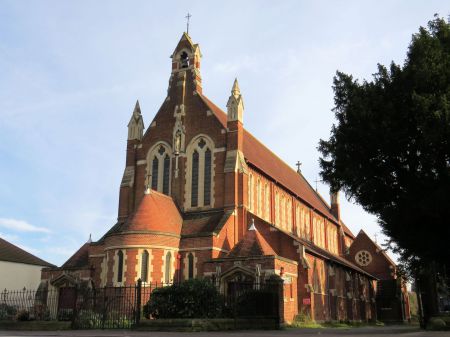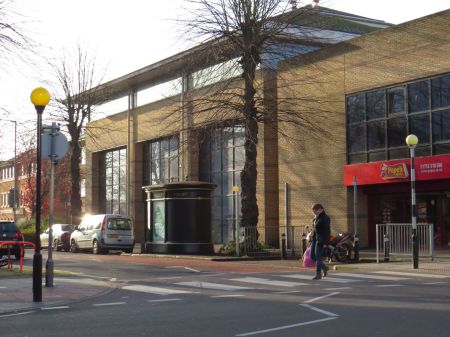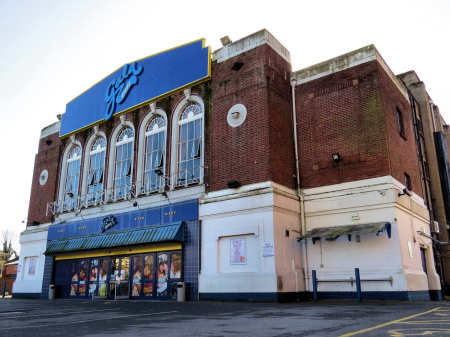
Note: Pages about areas of Slough such as this one are based on historic or accepted common usage rather than the artificial boundaries of the wards as set up by the Local Government Boundary Commission.
Slough and Wexham
Slough Town Centre grew from a concentrated string of coaching inns along the Bath Road. Sadly with the demise of the stagecoach business none of the original coaching inns in Slough exist anymore and the road became the High Street. Today the High Street is largely pedestrianized and the traffic takes the A4 running parallel just to the north of the Town Centre.
Wellington House and an entrance to the Queensmere Observatory Shopping Centre. The complex has nearly 595,500 square feet of retail space for about 120 shops and eateries along with a ten screen cinema complex. The office space amounts to nearly 62,765 square feet.
Brick making
Brick making was the first major industry in Slough. The brickfields were situated either side of Stoke Road extending east to Wexham Road and beyond. From 1442 to 1451 nearly two and a half million bricks were produced and taken by cart to build much of the original buildings of Eton College.
The brickfields led to the building of the Slough Arm of the Grand Union Canal and bricks were transported to other parts of the country via the waterway.
Wexham Road Bridge over the Slough arm of the Grand Union Canal
The most well-known brick making firm in Slough was owned by the Nash family who came from Beaconsfield in 1707 and lived at Upton Court until 1809. Thomas Nash began the brickfields in Slough and Langley about 1845 and founded H & J Nash Ltd in 1893. The company made an estimated 14 million bricks each year. The Nash family donated funds for the building and extension of St Mary’s Church and there is a stained glass window in the church in memory of Herbert Nash.
The clay deposits suitable for brickmaking lasted for about 500 years with production peaking in the early 20th century. The Slough area of brickfields was developed into residential housing, but the Langley area continued operating as the London Ballast Co (1935) Ltd providing gravel for road building including the local part of the M4.
Leopold Coffee House, Stoke Road
This unusual and attractive building was built in 1889 by Frederick Charsley. It provided an alternative place for beverages to the public house the Brickmaker’s Arms next door which I believe was built in 1871. As with many buildings in the area it was built using red brick produced by the local brickfields. On the top of the front of the building the name ‘The Leopold Coffee House’ inscribed into the brickwork of the pediment. The date of construction is in raised numerals within two raised boxes either side of the sash windows on the upper storey.
In the early 1970s it was a shop selling art materials. At the time of writing the building is occupied by the Chicken Ranch fast food shop.
This building, which is now a solicitor’s office, was originally a public house known as the Brickmaker’s Arms. It was later known as the Printer’s Devil.
St Paul’s Church
In the late 19th century, housing developments in the area north of Slough town centre were expanding and, in 1904, it was decided to create a new parish. Algernon Gilliat donated funds for the building of the Church of St Paul’s and the Vicarage. It was built from bricks supplied by H & J Nash Ltd and was consecrated in 1906.
Slough Safety Town
In the 1950s the town began to experiment with various safety initiatives especially on its roads. The first zebra crossing in the country was installed in Slough in 1951 and the town saw the first use in Britain of ‘Yield’ signs. These would later become ‘Give Way’ signs.
In the High Street and along the four lane section of the Bath Road on the southern edge of the Trading Estate, traffic signals were synchronized to the speed limit. If vehicles travelled constantly at the speed limit they would have a clear run of green lights. It was a very good scheme but is no longer necessary as the town is no longer a thoroughfare for traffic. These and other initiatives led to the town becoming known as Slough Safety Town.
Belisha Beacons, popularly named after the Transport Minister who introduced them. Have been around since 1934. The ‘zebra’ stripes were first added to a crossing in Slough in 1951. This modern Zebra Crossing in The Grove has tactile flag stones to assist blind pedestrians and zigzag lines to indicate no parking for vehicles.
Beatlemania!
On 4th November 1963, in the early stages of their career, The Beatles played at the Royal Command Performance. After the show the Queen Mother asked the band ‘where are you playing tomorrow night?’ Paul McCartney replied ‘Slough.’ The Queen Mother said ‘Oh, that’s near us.’
The following night, Beatlemania descended on Slough as 2,000 excited fans, each having paid ten and six (52·5p), queued outside the Adelphi cinema to see the band at the beginning of their careers. Pandemonium ensued as police tried to control the screaming fans. From the beginning of the gig to the end the noise of the fans almost drowned out the band as they performed their set which included:
- She loves you
- From me to you
- All my loving
- I saw her standing there
- Twist and shout
- Roll over Beethoven
The Beatles had previously played at the Adelphi earlier that year on 18th May. Other artists to perform at the Adelphi during the 1960s include: Roy Orbison, 1963; The Rolling Stones, 1964); The Byrds, 1965; The Jimi Hendrix Experience, 1967; The Bee Gees, 1968; and The Who, 1968. The Rolling Stones also visited the Carlton Ballroom, Slough, on 22nd April 1964 and the ticket prices were 7/6 (37·5p) in advance or 9/6 (47·5p) on the night. The Adelphi also played host to Max Miller, Yehudi Menuhin, Billy Cotton, Nana Mouskouri, Little Richard and the Walker Brothers.
My name is Gary Flint. I'm author, photographer & illustrator for Postcards from Slough. If you wish to make any comments on the contents of the website please click on the ladybird below:
Gary Flint
08/03/1961 - 09/04/2019
Postcards from Slough is an independently funded website. We are open to offers of sponsorship from companies that have any connections to the town. To contact us please click on the ladybird below:
Chalvey Community Forum
Postcards from Slough is linked with a local action group the Chalvey Community Forum. The group liaises with various local organisations in order to improve the quality of life for residents in the ward of Chalvey and Salt Hill. To learn more please click on the maidenhair leaf below:
Museum of Berkshire Aviation
I volunteer as a guide at the Museum of Berkshire Aviation. It is a special museum and if you would like to know more about the museum then please click on the motif below:
To learn more about the museums activities while staying within this website click on the tab at the top of the page or on the motif below:
Graces Guide
Postcards from Slough uses some images from Grace's Guide. Click on the button below:
British Listed Buildings
Postcards from Slough contributes material to British Listed Buildings and uses the site for cross referencing purposes. Click on the button below:
